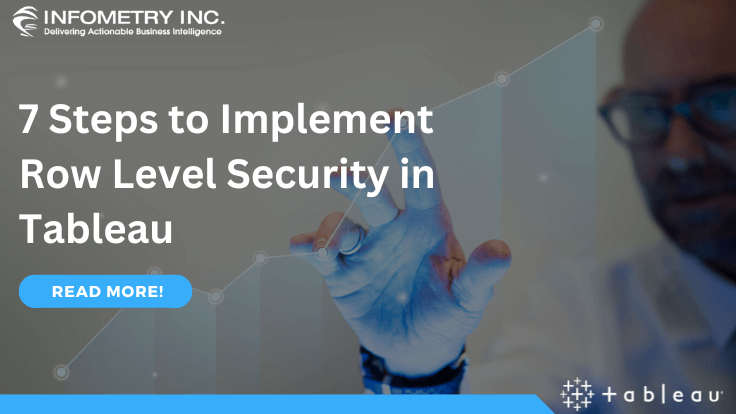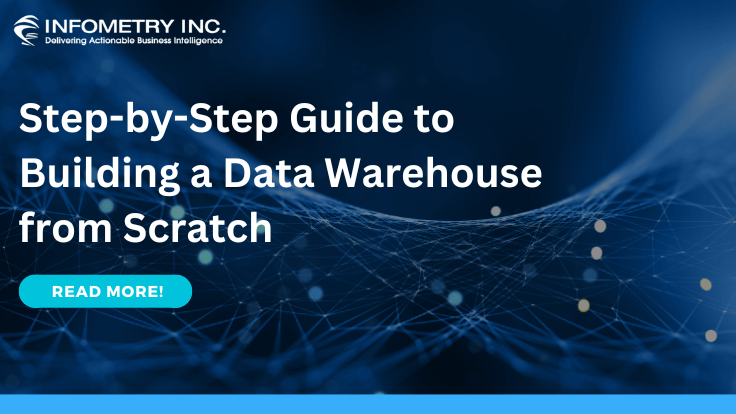
7 Steps to Implement Row Level Security in Tableau
January 11, 2023
Step-by-Step Guide to Building a Data Warehouse from Scratch
January 16, 2023When it comes to securing business information, I don’t think it’s a simple task to secure your information. We have a popular data security tool known as “Power Business intelligence” to conquer this obstacle. The fundamental motto for developing this Power BI is to limit information access and safeguard the business data for future use. Today we will clear up how to implement row-level security in Power BI and the rules to design your association’s safety. Are you eager to learn and arrange row-level security in Power BI in your enterprises? Then let’s get started.
What is Row Level Security in Power BI?
Row-level security (RLS) is a feature in Power BI that permits you to control access to information in a dataset based on the client’s role or identity. This implies you can design RLS to show just a subset of Underlying Data in Power BI to every client, given their permission level. For instance, you could utilize RLS to ensure that a sales rep sees information connected with their sales instead of the entire sales dataset.
What Are the Types of Row Level Security in Power BI?
Static vs Dynamic Row Level Security
Discussing the kinds of Power BI Row Level Security, two general classifications of RLS can be carried out into a Power BI report: Static RLS or Dynamic RLS. As the name recommends, Static RLS is not tricky to apply and requires a Power BI Engineer to characterize the security logic inside a PBIX document. Static Power BI RLS is simple to set up and execute and requires insignificant IT contribution. But, it requires high support and manual execution and isn’t reusable.
Dynamic RLS is a bit more complicated and requires the security logic to be characterized inside the PBIX record on the information model side utilizing connections. Setting up Dynamic Power BI RLS is tedious and includes aspect tables. Consequently, it requires greater IT involvement with negligible maintenance. It is an automated and reusable security model.
How is Row Level Security Implemented in Power BI?
Row-level security (RLS) is implemented in Power BI by creating security roles that define the access level for each user and creating rules that specify which data each part can access. These rules can be based on any column in the dataset, and you can use them to create complex, fine-grained access controls.
To create security roles in Power BI, you need to go to the “Security” section in the Settings menu and click on the “Roles” tab. This will bring up a list of existing security roles, and you can create new roles by clicking on the “New Role” button.
Select the role from the list to create rules for a security role, and then click on the “Manage Rules” button. This will bring up a dialogue where you can specify the conditions for the rule using any column in the dataset. For example, you could make a rule that only allows users in the role to see data for their own sales region.
Once you have created security roles and rules, you can apply them to a dataset by selecting the “Manage RLS” option in the dataset’s settings. This will allow you to choose the security roles you want to apply to the dataset, and Power BI will automatically enforce the access controls you have defined.
Overall, RLS is a powerful feature that can help you ensure that your data is secure and that users only have access to the data they are supposed to see.
Final Thoughts
Row Level Security is an integral asset for restricting access to delicate datasets, dashboards, and reports for various clients in your association utilizing filters and roles. Row Level Security guarantees that end users access what they should see. Power BI makes BA more proficient through intuitive, interactive, and easy-to-use services. Additionally, it may be complicated to break down and envision your information by loading it from a Data Warehouse to Power BI. This is where Infometry comes in.




